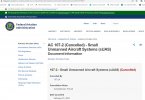It would surprise me if this is true, but now I have to check. Auto liability insurance pays the damages to others even if you're drunk as a skunk and going 100 mph. Part 61 aircraft liability insurance also pays the damages to other people, regardless of compliance status. I just assumed that drone liability insurance would be the same, but perhaps it isn't. Thanks for the heads up!I have RC flight insurance but they won't cover me if I'm flying out of compliance. Insurance certainly does not increase NAS safety IMO. However, proper training coupled with enough FAA approved obstacle avoidance or other specific safety equipment might be considered safe enough to allow some to qualify for specific BVLOS operations. Only then would I think an insurance company might cover you. Filing a flight plan to be approved by ATC comes to mind as just one hoop to jump through. I can't take it on my own to justify flying outside the current FAA rules whenever I want because I feel my (government approved) privilege to fly is a right. It's really no different than a full sized aircraft pilot pulling an illegal stunt and deciding to fly beyond the scope of the rules because they feel there is such a low chance of causing an incident. With more and more drones hitting the sky, a percentage of operator will break the rules; it's bound to happen. The FAA has to deal with that even if most people follow the rules. So I'm guessing flying BVLOS will be only for those with the necessary qualifications and safety equipment. That is something beyond my current skills and income as a Joe Blow hobbyist.
May I ask which insurance carrier you use, that doesn't pay damages to others if you aren't in compliance? If I was *hiring* someone for a drone operation, I wouldn't want them to have insurance with that restriction. Too much weasel room for an insurance company to give me static, if something did go wrong.
An insurance requirement mitigates the risk of 3rd parties suffering uncompensated damage from drone operations. I suppose as a definitional question you could say that doesn't count toward improving NAS safety, but I think it does. Mandatory auto insurance definitely reduces risk for good drivers, from bad drivers.
dronedave : "However, proper training coupled with enough FAA approved obstacle avoidance or other specific safety equipment might be considered safe enough to allow some to qualify for specific BVLOS operations. Only then would I think an insurance company might cover you."
That's not far different from what I suggest, except for the "specific operations" part. Additional required training and aircraft systems required for BVLOS. I think I assumed, but didn't say, that BVLOS should be limited to people with their Part 107 license.
I never had any issues getting insurance when I was flying using my instrument rating, and you don't need to get any specific approval for any given instrument flight. That's the way BVLOS and insurance will go, although not immediately. Probably need RID to get there.
Thx,
TCS










